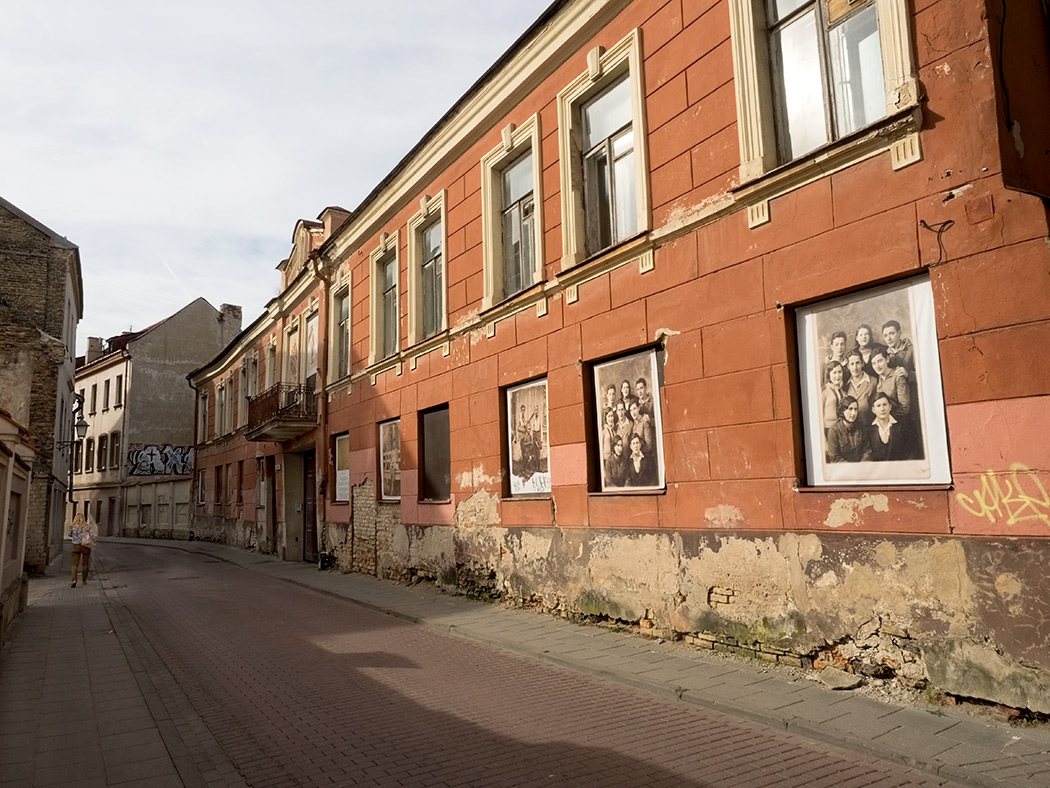Prior to World War Two, this street in Vilnius, Lithuania was part of a thriving Jewish community. While there are no exact numbers available, estimates of the pre-WWII Jewish population range between 60,000 and 80,000. After the German Army seized the city in June of 1941, they killed more than 21,000 Jews in a mass extermination program. Remaining Jewish residents were forced to relocate into two small areas near the historic center of the city. This became the Jewish Ghetto of Vilnius. During the two years of its existence, almost every remaining Jewish resident died from starvation, disease, exposure, maltreatment, executions, or deportation to concentration camps. It is estimated that only around 100 survived, mostly by hiding in the surrounding forests.
Some years back (no one seemed to be able to give me details of where or when), photos of Vilnius’ Pre-WWII Jewish residents were discovered. As a tribute to the once thriving community, large prints of the photos were mounted in the windows of houses in the ghetto. The gallery is haunting. The faces have no names; they are ghostly reminders of a rich cultural heritage that existed in Vilnius, once known as the Jerusalem of Lithuania.


I have just published a historical novel about two families, one Jewish, the other Catholic Polish, living in Vilnius in the first half of the twentieth century. It’s titled The Arnolfini Connection. My research into its history revealed that for centuries Lithuania’s neighbours fought to control this highly successful and cultured city. Although its Polish residents suffered greatly during and after WW2, the Jews were, as you say, virtually wiped out. My book details the events and how the lives of the families are shattered by them.
Hi Brenda. How interesting! I’ll check it out.
Chilling story! Brrrr …
Definitely was Linda. Gruesome, in fact.